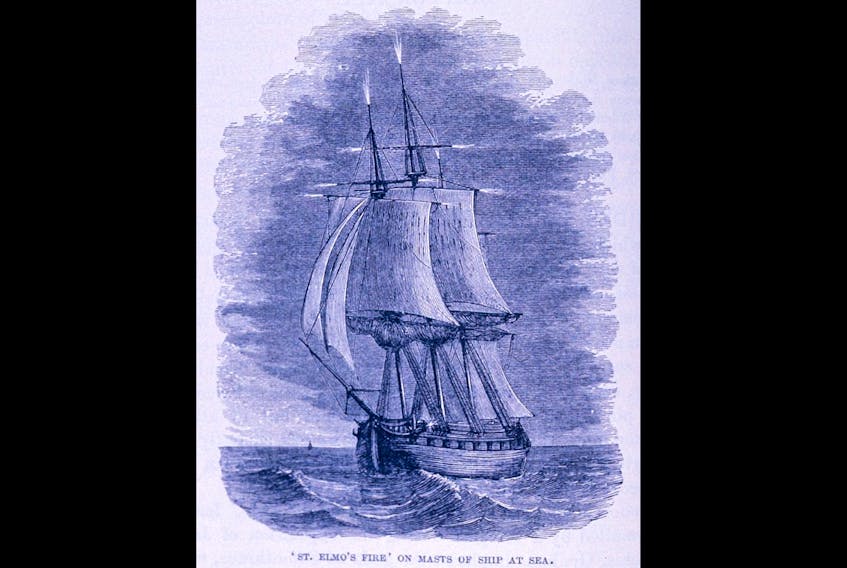
On March 22, something very unusual happened after sunset along an old gravel road in Antigonish County, N.S.. Brianna and Mike were the only two who saw it and they may never travel down that road again.
Here’s Brianna’s account: “… on the right hand side in the woods we both seen this super bright glowing figure. I thought to myself, that it isn’t a sign because it’s too far in the woods and it’s not a light because it had such an odd shape (person like figure) it was glowing an extremely bright white colour.
“…immediately after we seen the thing which I’m going to assume was a ghost a battery for the Sea-Doo in the back seat of the truck began to spark like crazy, sparks kept flying in under my seat and wouldn’t stop I thought it was on fire…”
I wasn’t there and I didn’t see it, but I certainly believe Brianna’s vivid description of what must have been a terrifying few minutes. However, I do feel some science could explain the eerie glowing light that sent the couple back to the highway.
After corresponding with Brianna, I believe her frightening ordeal could have been a result of St. Elmo’s Fire. The rare sighting is not lightning or ball lightning or even fire for that matter. St. Elmo's Fire is a weather phenomenon involving a gap in electrical charge. It produces a type of continuous electric spark called a "glow discharge.” Scientifically, the phenomenon is known as a coronal discharge caused by a difference in the electrical charges of the air and the ground.
No ghosts required, but a thunderstorm is essential. At 9 p.m., the precise time that Brianna and Mike witnessed the eerie glow, there were thunderstorms in the vicinity. They were not directly overhead, but they don’t have to be; large thunderstorms have anvils that stretch many kilometres ahead of the weather associated with the storm.

During a thunderstorm, you’ll find a significant difference in the charge between the ground and the storm clouds; this creates electric pressure or voltage. At that point, the atoms in the air undergo ionization. The electrons distance themselves from the protons and move around freely. When this happens, the air becomes a good conductor of electricity leading to the creation of plasma or ionized air – a.k.a. St Elmo’s Fire.
The voltage tears apart the air molecules and the gas begins to glow. The constant glow can last several minutes. The color is governed by the atmospheric contents; on Earth, it’s primarily oxygen and nitrogen that result in a bright white glow with some blue undertones.
“(I)t was glowing an extremely bright white colour,” Brianna said.
Tall, pointed objects such as masts, chimneys and spires can facilitate St. Elmo’s Fire since these surfaces can discharge at lower voltage levels, but the eerie glow can also appear on leaves and grass and is often accompanied by a hissing or buzzing sound.
“We did hear hissing but assumed it was from the battery.”
You and I see a controlled, contained example of this every day. St. Elmo's Fire is exactly what's happening in neon light tubes – essentially, a continuous spark. If Earth's atmosphere were made up of neon, St. Elmo's Fire would glow orange instead of blue. A neon tube is simply St. Elmo's Fire contained in glass.
We also see the same thing when we shuffle across a carpet and then touch a doorknob during winter. When there’s enough difference in electrical potential between two objects, sparks fly.
For centuries, St. Elmo’s Fire was looked upon as an eerie glow by sailors at sea, but it has been explained scientifically by greats like Benjamin Franklin and Charles Darwin. Rather than being anything ghostly or paranormal, the glow, mostly occurring at the end of a storm, is just static electricity in action.
- Have you ever had a similar unexplained experience? You can share it with us at [email protected].
- Interested in original story about this eerie experience? Read the full story online at The Casket: Eerie experience for Liscomb couple
Cindy Day is the chief meteorologist for SaltWire Network.









